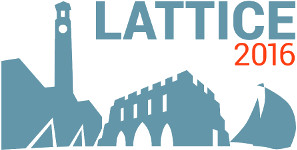Speaker
Andre Walker-Loud
(LBNL)
Description
Motivated by the Feynman-Hellman Theorem, we develop an improved method for computing matrix elements of external currents utilizing only two-point correlation functions.
The contamination from excited states is shown to be Euclidean-time dependent allowing for a significantly improved ability to reliably determine and control the systematics.
We demonstrate the utility of our method with a calculation of the nucleon axial-charge, performed at a single lattice spacing and a moderate unphysical pion mass.
The Feynman-Hellman Theorem can be derived from the long Euclidean-time limit of correlation functions determined with functional derivatives of the partition function.
This elucidates the generic applicability of our new method: one can determine matrix elements of any external current by computing only two-point correlation functions, including non-zero momentum transfer and flavor-changing matrix elements.
Primary author
Andre Walker-Loud
(LBNL)
Co-authors
Dr
Chris Bouchard
(William & Mary)
Prof.
Kostas Orginos
(College of William and Mary/JLAB)
Dr
Thorsten Kurth
(LBNL)

